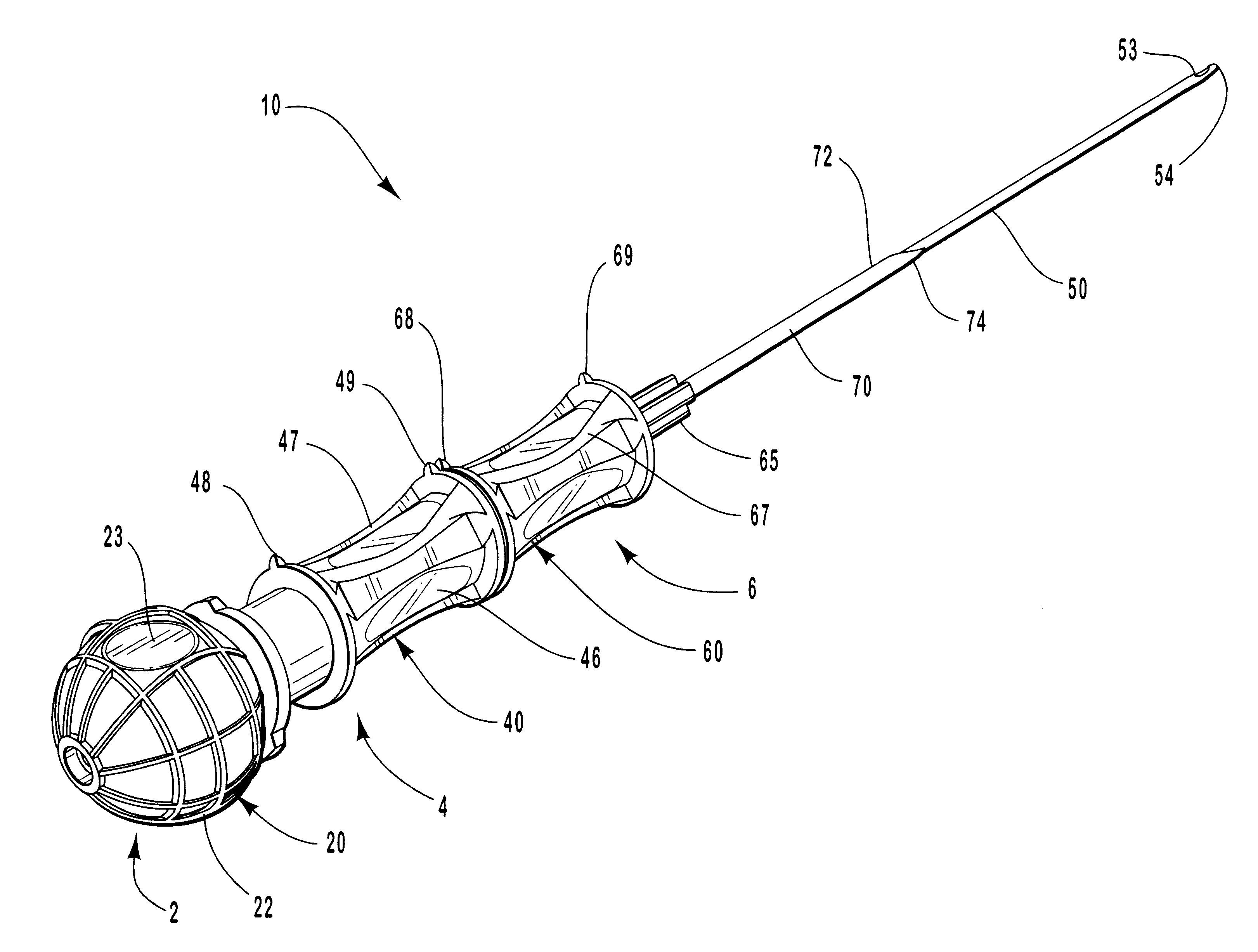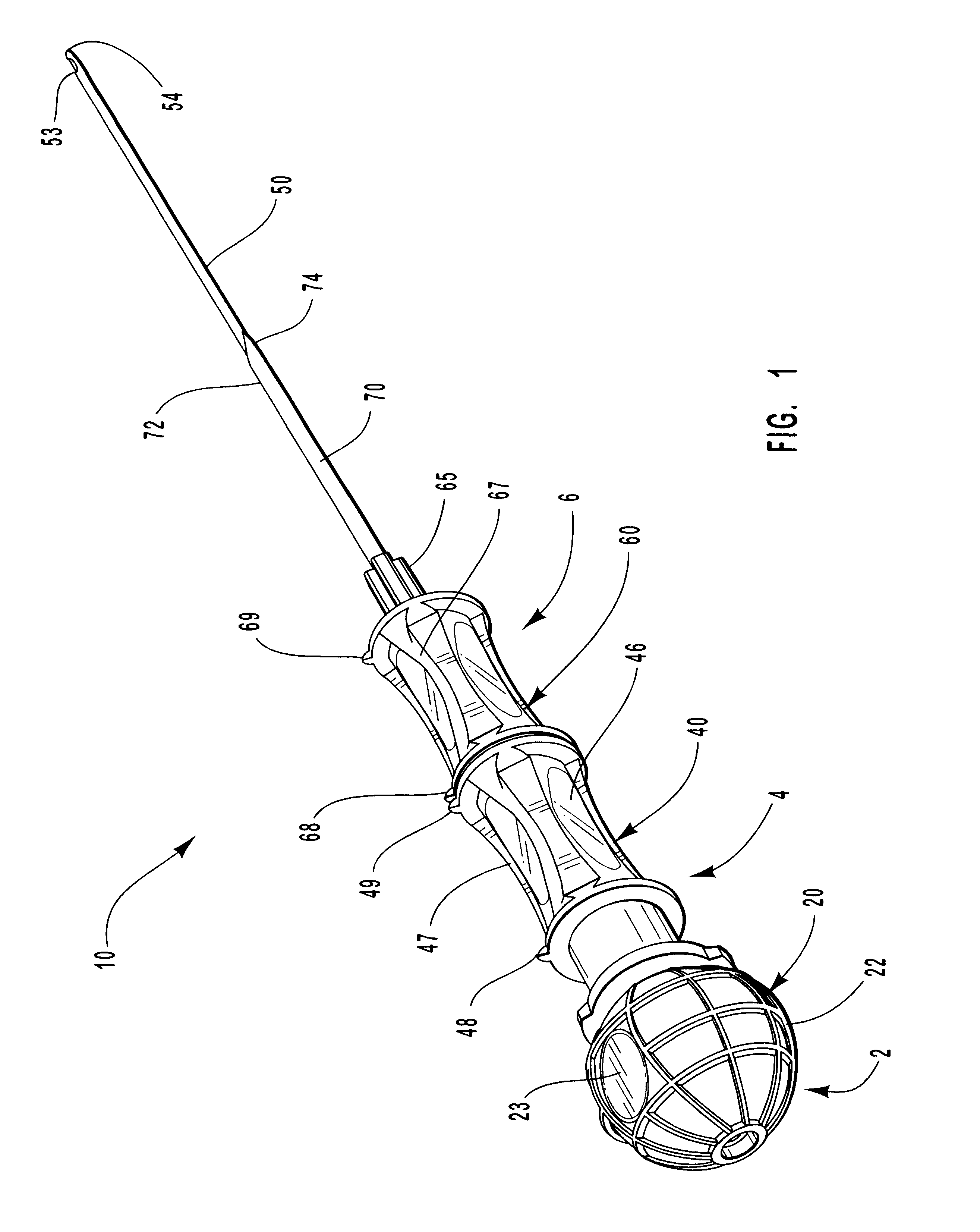Spinal needle
a needle and spine technology, applied in the field of spine needles, can solve the problems of inability to puncture the dura, the tip of the conventional epidural or spinal needle may accidentally enter the subdural space, and the inability to contact the nerve roots,
- Summary
- Abstract
- Description
- Claims
- Application Information
AI Technical Summary
Benefits of technology
Problems solved by technology
Method used
Image
Examples
Embodiment Construction
In one embodiment of the present invention, a spinal anesthetic delivery device comprises three components. A sharp, hollow introducer component a few centimeters in length that is used to puncture the skin, a more blunt hollow needle component that is several centimeters in length that is slideably disposed within the hollow introducer to allow the caregiver to delicately pierce the dura membrane, and a stylet component that is slideably disposed within the introducer to selectively occlude the needle and control the flow of fluid therein. The introducer and needle components both have relatively small transparent hubs on their proximate ends. The hubs act as handles or grips to facilitate manipulation of the introducer and needle and allow the caregiver to view fluids passing into or out of them.
Using the present invention, a care giver administers a lumbar puncture procedure following the steps typically used in procedures well-known in the art, but includes the advantageous step...
PUM
 Login to View More
Login to View More Abstract
Description
Claims
Application Information
 Login to View More
Login to View More - R&D
- Intellectual Property
- Life Sciences
- Materials
- Tech Scout
- Unparalleled Data Quality
- Higher Quality Content
- 60% Fewer Hallucinations
Browse by: Latest US Patents, China's latest patents, Technical Efficacy Thesaurus, Application Domain, Technology Topic, Popular Technical Reports.
© 2025 PatSnap. All rights reserved.Legal|Privacy policy|Modern Slavery Act Transparency Statement|Sitemap|About US| Contact US: help@patsnap.com



